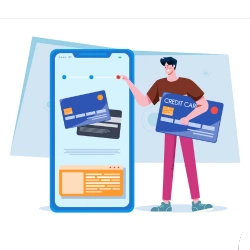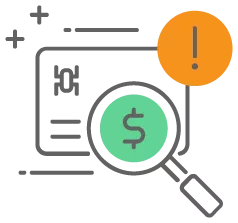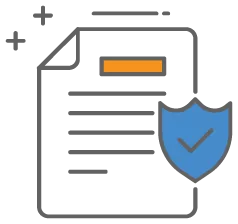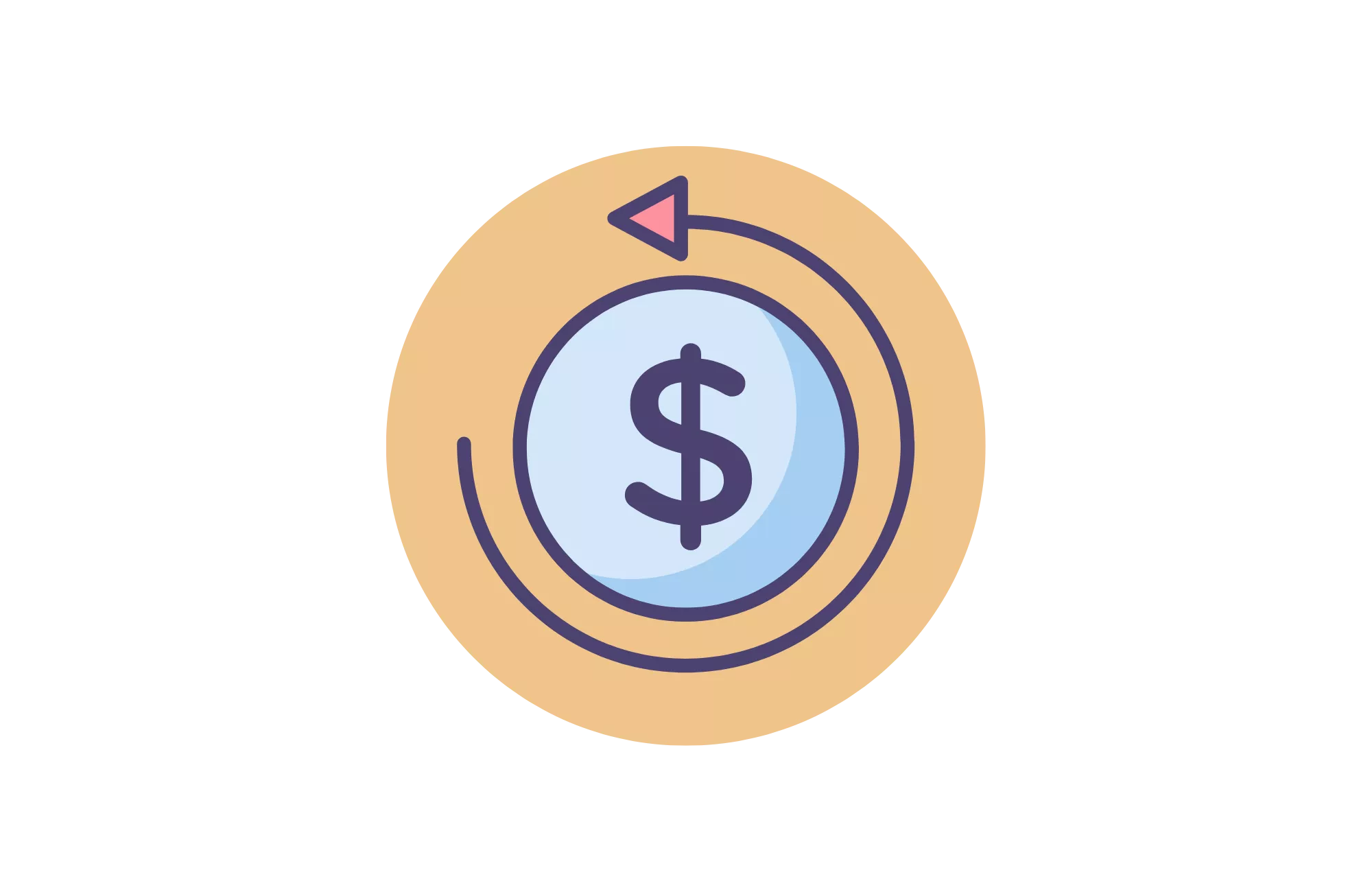TABLE OF CONTENTS
- What Is a Chargeback?
- How Does a Chargeback Work?
- Chargeback Time Limits
- What Is the Difference Between a Chargeback and a Refund?
- Debit Card vs. Credit Card Chargebacks
- The Three Types of Chargebacks
- The 6 Most Common Reasons for Chargebacks
- Chargeback Reason Codes
- Understanding Chargeback Fees
- The Consequences of a Credit Card Chargeback
- How to Prevent Chargebacks
- How to Fight Chargebacks
- What Does a Chargeback Mean? Closing Thoughts
- FAQs About Chargebacks

There is a range of risks associated with accepting credit card payments at your business, a major one of which is the event of chargebacks. A chargeback occurs when a customer disputes a charge from your business on their credit or debit card. If the dispute is successful, funds are taken from your merchant account and a strike is made against your business.
While the risk of chargebacks may elevate your financial exposure, processing credit card payments is more critical than ever. With more than 1.3 billion credit and debit cards in the United States, businesses simply can’t afford to only accept cash in the modern economy.[1]Statista. “Number of credit cards and debit cards in the United States from 2012 to 2019“. Accessed October 18, 2022.
If you plan on accepting payments at your business, it’s important to know everything there is to know about chargebacks. Fortunately, we have you covered below!
What Is a Chargeback?
A chargeback results from a credit card payment dispute lodged against a business by a customer. If a credit card user believes a charge is fraudulent or a business missold products, they can contact their issuing bank to dispute the charge. If successful, a chargeback initiates, and funds are sent back to the customer. However, businesses can also dispute chargebacks if they believe the transaction is legitimate.
Unfortunately, chargeback disputes are commonly done by fraudsters. They may purchase legitimate items or services and file chargebacks to recover the money. For this reason, not correctly managing chargebacks can result in financial hardship for companies accepting credit cards.
The history of chargebacks
While chargebacks can cause numerous problems for businesses, they are essential to modern credit card payments. The purpose of chargebacks is to protect consumers from fraudulent business practices.
The origin of chargebacks can be traced back to 1974, at which point the United States passed the Fair Credit Billing Act. This act sought to make credit card payments more trustworthy by allowing cardholders to dispute fraudulent charges:
“This Act, amending the Truth in Lending Act, requires prompt written acknowledgment of consumer billing complaints and investigation of billing errors by creditors. The amendment prohibits creditors from taking actions that adversely affect the consumer’s credit standing until an investigation is completed, and affords other protection during disputes. The amendment also requires that creditors promptly post payments to the consumer’s account, and either refund overpayments or credit them to the consumer’s account.”
— The Federal Trade Commission
How Does a Chargeback Work?
Few merchants understand the whole process of a chargeback. If your business receives a chargeback, you can expect the following steps to occur:
- The cardholder initiates a chargeback dispute.
- Issuing bank contacts the acquiring bank.
- The acquiring bank resolves the dispute or forwards the chargeback to the merchant.
- The merchant challenges or accepts chargeback.
- If the merchant challenges the chargeback, the acquiring bank conducts a review to ensure the challenge meets the minimum requirements.
- If minimum standards are met, the dispute is forwarded to the card issuer, which conducts a review to determine the validity of the dispute.
- A chargeback decision is made and both parties are notified.
- If either party is unsatisfied with the result, they can take the case to arbitration.
Understanding the above process will help you prepare for potential chargebacks. While taking a chargeback to arbitration can be a lengthy and costly process, it can protect your business.
Chargeback Time Limits
If a customer wants to file a chargeback dispute against a merchant, they have 60 days. However, most banks give their clients 120 days.
What Is the Difference Between a Chargeback and a Refund?
While seemingly similar, chargebacks and refunds are two very different processes. With a chargeback, a customer files a dispute against your business, which will engage a process potentially damaging the reputation of your merchant account and resulting in an involuntary refund.
On the other hand, a refund is a voluntary reimbursement made by your business. This means while the customer receives their money, you approve the transaction, and the process does not impact your merchant account negatively. For this reason, it’s important to write a clear return policy. You need to make reasonable refunds accessible if you want to avoid unnecessary chargebacks.
Debit Card vs. Credit Card Chargebacks
The process of filing a chargeback with a debit and credit card is effectively the same for both types of cards. However, when you use a credit card, you are technically using borrowed funds. This means a bank may make more effort to recover funds if a credit card was used. Additionally, many people prefer to use credit cards for this reason.
Can you do a chargeback on a debit card?
Yes. Many people make the mistake of thinking only credit cards can be used for chargebacks. Consumers can contact their banks to process a chargeback if an incorrect charge is filed against their debit card.
The Three Types of Chargebacks
Friendly Fraud
Friendly fraud, which is responsible for most chargebacks, occurs when a cardholder purposefully or mistakenly reverses a charge to recoup their money. For example, customers may not recognize your name on their credit card statements. However, friendly fraud can be criminal—customers may pretend their card number is stolen or they didn’t receive an item.
True Fraud
As its name suggests, “true fraud” is standard credit card fraud. This type of fraud occurs when someone steals credit card information and uses it to make purchases at your business. Unfortunately, there’s no point contesting actual fraud, unless you have proof the cardholder is lying. Credit card fraud prevention tools, including credit card authentication, are the best way to avoid this issue.
Merchant Error
Chargebacks can occur because of legitimate merchant errors. For example, if you double-charge a customer, mischarge a customer, send the wrong product, or make any other mistakes, you may end up with a chargeback. You can better protect yourself from financial liability with good business practices. Ensure items are in stock before selling them and keep employees well-trained.
The 6 Most Common Reasons for Chargebacks
Understanding the following issues most commonly resulting in chargebacks can help you mitigate risk in your business.
1. Shipping & delivery issues
Some businesses outsource shipping to a third-party delivery company, increasing the chances of a package failing to arrive within the time limits communicated to the customer by the business’s shipping policy. Using a reliable shipping partner that can consistently deliver packages on time and having a dedicated customer support team can help you resolve this problem before it becomes a credit card chargeback.
2. Fraud
As discussed previously, chargebacks can result from various types of fraud. This can be particularly challenging for those selling high-ticket items. Having controls like strong documentation, ID verification, and online credit card fraud tools will prevent fraudsters from taking advantage of your business.
3. Dissatisfied customers
Unfortunately, customers can often use chargebacks when they are unsatisfied with a product or service. You can avoid this problem by having a flexible refund policy. Likewise, having accurate product descriptions will ensure customers know what to expect when they make a purchase.
4. Pricing issues
Pricing issues can occur if a customer is charged twice or overcharged for a product. Make sure you immediately issue refunds for incorrect transactions. There are even instances in which a customer receives a product or service and feels the price paid was too much and they decide to dispute the charge with their bank. To avoid this, make sure your pricing strategy is not only profitable for your business, but also worth it to your consumers.
5. Recurring revenue
If you operate a recurring revenue business model—also known as a subscription service business model—chargebacks can become an issue. If customers sign up for a service billing them on a recurring basis, they may file a chargeback if they cannot figure out how to cancel. Make sure you make it simple for customers to cancel recurring billing if you want to avoid unnecessary chargebacks.
6. Unrecognizable transaction
One of the most common reasons for chargebacks is an unrecognizable transaction on a credit card statement. If a customer doesn’t believe they processed a particular payment, they may file a chargeback dispute.
In many cases, it’s due to a business using a billing descriptor different than its business name. A customer may believe the charge is fraudulent when a descriptor on their card statements is not familiar to them. Make sure to use your business name for payments to avoid confusion potentially leading to disputes.
Chargeback Reason Codes
Chargebacks are classified by “chargeback reason codes.” Assigned by credit card networks to indicate the reason for a chargeback, these codes provide information to both the merchant and the acquirer in order to help resolve the dispute.
Additionally, a chargeback code can change anytime during a dispute process so you must stay up to date with any changes to a chargeback claim. You can provide your acquiring bank with any relevant information to help your case. If you receive a chargeback, it’s important to review the reason code so you can take the appropriate steps to prevent future chargebacks.
Understanding Chargeback Fees
Chargebacks may result in fees being charged by your merchant account provider, with each provider having its own fee policy. While some fees are as high as $100, most chargeback fees are closer to $20. This being said, the true cost of a chargeback is much higher due to the refunds to customers, money wasted on challenging chargebacks, and the loss of other resources.
The Consequences of a Credit Card Chargeback
If a customer files a chargeback against your business, a range of issues can arise. Let’s explore all the potential consequences of a chargeback:
- Decreased revenue: Chargebacks can impact your cash flow, damaging your ability to order more stock, pay bills, or hire staff.
- Waste of product: If a product is provided to a customer, but their chargeback is successful, you will likely not receive the product back.
- Time loss: The time spent disputing a chargeback made against your business takes time away from your ability to manage other parts of your business.
- Difficulty in finding a new processor: If you have a high chargeback ratio, your payment processor may require you to obtain a high-risk merchant account to access the security features necessary to guard against future chargebacks.
- Chargeback fees: Most providers charge non-refundable fees when a chargeback is filed against your business, ranging anywhere between $20-$100.
- Merchant account termination: Once a merchant account provider believes your account is too risky, they can rescind your payment processing privileges.
- High processing rates: If your business had a high chargeback ratio, finding a new processor is difficult. You may be forced into paying extremely high credit card processing rates.
How to Prevent Chargebacks
While it’s hard to avoid all chargebacks, there are steps you can take to reduce your chargeback exposure.

Offer reasonable return allowances
Writing a transparent return policy that allows customers to receive a refund within a certain timeframe can help you avoid chargebacks. If a customer does not believe they can return an item, they may opt to use the chargeback system to recover their funds. Even if you successfully contest this type of chargeback, it can damage your standing with your merchant account provider.

Use credit card fraud prevention tools
Online payments are one of the primary sources of chargebacks, as they are particularly susceptible to credit card fraud. However, there are now advanced fraud detection tools using location, personal information, two-factor authentication, and other resources to prevent this type of chargeback.

Outline shipping, return, and warranty policies clearly
If you want to avoid customers filing chargebacks, you must have clear policies surrounding shipping, returns, and warranties. In doing so, you will have evidence your customer should have been aware of your policies, which can help dispute a chargeback.

Use your trading name on your merchant account
Always use your trading name on your merchant account. This ensures your customers will recognize your company’s name on their bank statements. Not doing so can result in confusion and accidental chargebacks.

Only advertise accurate product descriptions
If you don’t use accurate product descriptions, customers may allege you missold products. If your product descriptions are correct, you will have evidence you appropriately identified the product and its features to your customer, which will be a valid defense against a chargeback.

Utilize authorization holds
An authorization hold freezes the transaction amount on your customer’s credit card rather than finalizing the transaction. Your business can then finalize the transaction at a later date. This can be useful as customers cannot file chargebacks on authorization holds. If a customer wants to return an item, you can simply reverse the hold without incurring a chargeback.
How to Fight Chargebacks
While fighting chargebacks can be expensive and time-consuming, you don’t want your business to develop a reputation as an easy target for fraud. Likewise, evidence suggests fighting chargebacks can be an excellent source of revenue recovery. Recent research claims businesses can attain more than 900% return on investment when choosing to challenge chargebacks.[2]Globe News Wire. “Annual Chargeback Report Released With New Industry Data“. Accessed October 18, 2022.
If a chargeback is filed against your business, the issuing bank will give you the option to plead your case. You should compile all relevant evidence and write a rebuttal letter outlining why the transaction was correct. Some businesses conduct this process internally, while others hire chargeback management companies to help them fight chargebacks. Regardless of which approach you take, keeping good records, utilizing fraud prevention tools, and implementing other internal controls can help you collect the documentation you need to challenge future chargebacks.
For more detailed guidance on fighting chargebacks, please refer to our explainers on chargebacks issued by specified entities:
Card Networks
What Does a Chargeback Mean? Closing Thoughts
Now that you understand chargebacks and their associated risks, it’s time to form a prevention strategy in order to save your business money and its merchant account. Strong internal business controls and fraud prevention tools are a good starting point. If your business is prone to chargebacks, it’s also valuable to partner with a merchant services provider experienced in supporting businesses with chargeback protection solutions. Don’t underestimate the power of mitigating chargebacks!
FAQs About Chargebacks
Is a dispute the same thing as a chargeback?
In many cases, a customer disputing a transaction is interchangeable with the term “chargeback,” however a transaction dispute is an action that results in a chargeback.
What is the difference between a chargeback and a payment reversal?
A payment reversal—also known as an authorization reversal—reverses an authorization hold. On the other hand, a chargeback reverses a transaction after it is already settled. Payment reversals won’t damage your merchant account’s standing, whereas chargebacks can.
Who is responsible for a chargeback?
Unfortunately, a merchant is responsible for a chargeback. Not only are businesses financially responsible for chargebacks, but the process can also record a strike against its merchant account. If a business’s chargeback ratio is too high, it risks higher processing rates or the complete loss of its processing.
How long does a chargeback take?
While most chargebacks are processed in a few weeks, some can take months.
If you are a customer wanting a refund, this is another reason not to use chargebacks as a substitute for reimbursement. A refund is a quicker way to access funds if you are unsatisfied with a product or service.
How do you draft a chargeback rebuttal letter?
A chargeback rebuttal letter should contain all the details regarding the transaction and its circumstances. You need evidence supporting your claim that the charge is legitimate. Strong evidence to include is tracking information, your return policy, and copies of communication between you and the customer.
All chargebacks are different, so draft a letter based on the individual circumstances.
How can you tell if a customer filed a chargeback dispute?
Your acquirer will contact you regarding any chargebacks filed against your business. For each chargeback, you have the choice to challenge it or accept it.
Should you fight a chargeback as a business owner?
This depends on the nature of the chargeback. If you know a chargeback is incorrect, it’s critical to challenge it. While the process of fighting a chargeback can be time-consuming, it can help you protect your merchant account and bottom line.
Likewise, if you don’t challenge illegitimate chargebacks, fraudsters might target your business. Fighting chargebacks can act as a deterrent against future fraud attempts.
What is a chargeback threshold?
A chargeback threshold is the maximum number of chargebacks a merchant account provider considers acceptable. If your chargeback ratio is over the threshold, you may incur fees, higher processing rates, or termination of your merchant account.
How often do chargebacks occur on average?
This depends on your business’s operations and industry, as well as the number of transactions your business processes. Ask your merchant account provider what they consider acceptable chargeback levels for your business.
What is an authorization hold, and how does it play a role in chargeback prevention?
Because an authorization hold does not finalize a transaction, a customer cannot file a chargeback against it. This is a valuable tool for fighting chargebacks, as you can finalize the authorization hold at a later date once you are more confident your customer will not initiate a dispute.
What is a chargeback ratio?
A business’s chargeback ratio is the number of chargebacks it receives divided by its number of total transactions. This is typically calculated monthly, and your merchant account provider may restrict your account if your ratio is too high when calculated.








